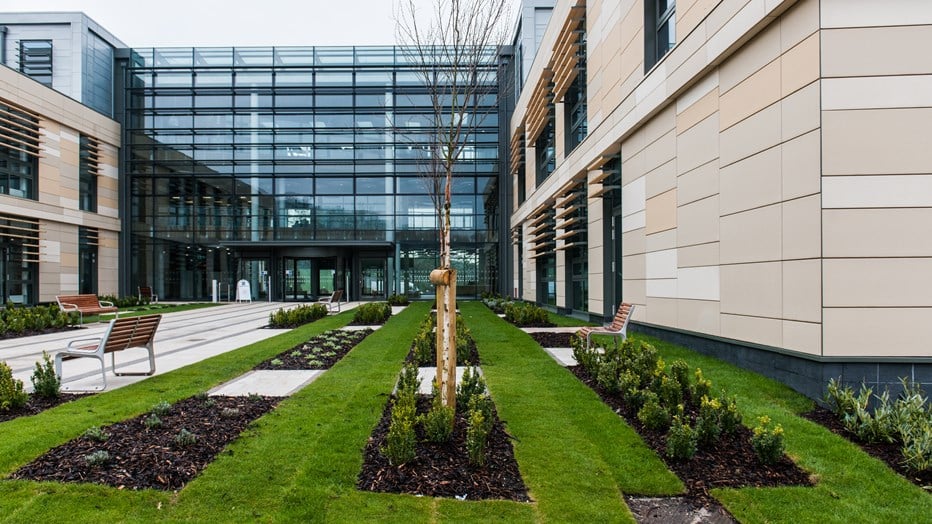Constructing a world-class teaching facility
We developed the £20 million ‘Commons’ academic building at Bath Spa University’s Newton Park Campus. The construction of this world-class teaching facility was successfully handed over in February 2014. It incorporates:
- superb digital spaces for TV broadcasting, editing, audio monitoring and control
- bespoke academic teaching spaces, including a new e-library
- the South West’s largest media wall
- flexible teaching, learning and research spaces throughout the building
Group consultation
The 9,600sqm building, in a beautiful green field location, adjacent to a Grade I listed building, was developed after close consultation with English Heritage, Natural England, the Duchy of Cornwall, Bath & North East Somerset Council and many other groups.
The envy of the world
The building was delivered on time and officially opened in June 2014 by Lord Puttnam CBE, who said: “Having walked around the Commons, the facilities are absolutely stunning. For the first time in a long time I wanted to be 18 years old again and going to university. This is the sort of facility that any university anywhere in the world would envy.”
Thanks to this new building, Bath Spa’s students can now make use of state-of-the-art teaching facilities across a range of disciplines.
Exploiting natural heat and light
The building is naturally ventilated, with a form and façade that minimises energy use. This is further enhanced by it being orientated to maximise natural heat and light.
Environmentally sensitive
A range of innovative environmental features led to the building achieving a BREEAM ‘excellent’ rating and EPC rating ‘A’. The features include:
- solar protection to avoid overheating and glare
- photovoltaic panels to capture solar energy
- an energy centre serving as a district heating network, with a woodchip biomass boiler, eliminating the use of fossil fuels
- rainwater recycling to service the WCs and irrigation system
- low-energy LED lighting with automatic controls and sensors
- a high-performance thermal construction to keep energy bills down
- natural construction to allow cooling in hot weather without the need for air conditioning
- feature light wells that also serve as ventilation stacks, drawing air through the teaching areas




